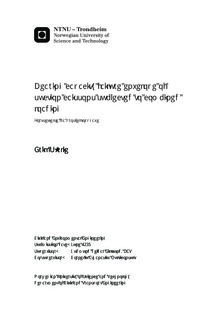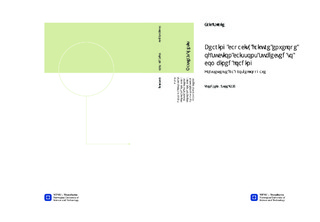| dc.contributor.advisor | Eiksund, Gudmund Reidar | nb_NO |
| dc.contributor.advisor | Athanasiu, Corneliu | nb_NO |
| dc.contributor.author | Sørlie, Erik | nb_NO |
| dc.date.accessioned | 2014-12-19T11:32:16Z | |
| dc.date.available | 2014-12-19T11:32:16Z | |
| dc.date.created | 2013-10-03 | nb_NO |
| dc.date.issued | 2013 | nb_NO |
| dc.identifier | 653354 | nb_NO |
| dc.identifier | ntnudaim:9347 | nb_NO |
| dc.identifier.uri | http://hdl.handle.net/11250/232668 | |
| dc.description.abstract | The objective of the master thesis is to use the failure envelope approach to determine the ultimate capacities of a suction anchor, and to establish a strain-hardening elasto-plastic model in terms of loads and displacements at padeye. Numerical analysis in Plaxis 3D has been executed for the suction anchor, which has formed a capacity surface in terms of combined loading at the padeye. General loading at padeye will result in six force components, which can be expressed by three independent variables due to constrained loading conditions. Empirical yield surfaces, that take all six force components into account, have been curve-fitted to the Plaxis results. The yield surfaces have been used together with load-displacement relations to establish an elasto-plastic formulation with respect to loads and displacements in terms of the padeye. The results were further generalized, and can be used to estimate the response of other suction anchors. The elasto-plasticity has been implemented by isotropic hardening, governed by a curve-fitting hyperbola. The formulation was implemented in Excel as a spreadsheet that provided accurate results for most load combinations. The sheadsheet is applicable for both tensile and compression forces, and laod histories for up to 10 steps can be applied. Each load step in the spreadsheet was divided into 100 load increments. The spreadsheet was made in a general way, where the input parameters were the ultimate force components, the eccentricities to the neutral planes, the elastic stiffness coefficients and empirical curve-fitting coefficients with respect to both the yield surface and the hardening law. Mesh refinements and hand calculations have been applied. Comparisons show that most load cases have an adequate convergence; however the torsional capacity was overestimated with about 50%. Analysis without an activated padeye showed that the overestimation was caused by the flow around mechanism close to the padeye. The author will recommened to model the anchor without a padeye for later studies, and rather apply a set of force vectors that give the same load. | nb_NO |
| dc.language | eng | nb_NO |
| dc.publisher | Institutt for bygg, anlegg og transport | nb_NO |
| dc.title | Bearing capacity failure envelope of suction caissons subjected to combined loading: Fortsettelse fra prosjektoppgave | nb_NO |
| dc.type | Master thesis | nb_NO |
| dc.source.pagenumber | 131 | nb_NO |
| dc.contributor.department | Norges teknisk-naturvitenskapelige universitet, Fakultet for ingeniørvitenskap og teknologi, Institutt for bygg, anlegg og transport | nb_NO |

